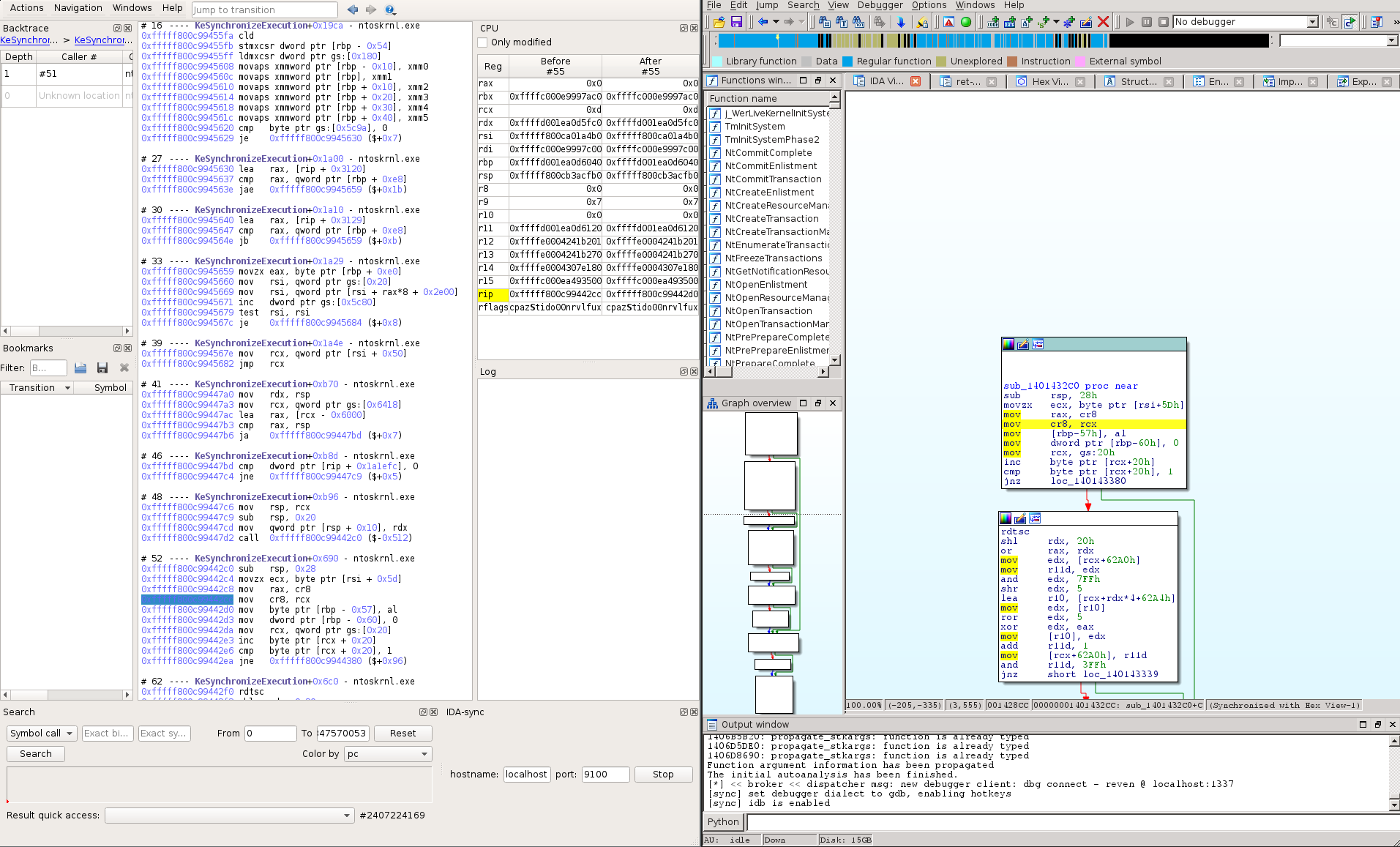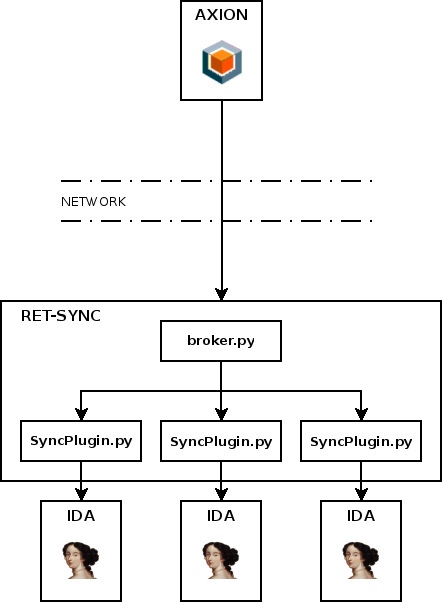Axion IDA Sync Plugin

The IDA-sync Axion plugin enables the synchronization of IDA instances with the
currently selected instruction of an Axion instance. It is basically a wrapper
around Ret-Sync, which is a tool written by Alexandre Gazet.
Setting up the plugin
Prerequisites
There are several prerequisites in order to use the plug-in:
- OSSI for your scenario must be available in REVEN.
- You must ensure network connectivity between the Axion and IDA hosts. In particular, if a firewall is activated, it must allow to open a socket on the selected host and port.
Installing Ret-Sync
To use the plugin, you have to download Ret-Sync first. We recommend fetching our forked project on Github as it is the REVEN-supported version.
$ git clone https://github.com/tetrane/ret-sync
Configuring Ret-Sync
Ret-Sync allows remote setup, that is having IDA on a different host than Axion. To allow this kind of configuration, the Ret-Sync IDA plugin handles debugger events through a network socket and dispatches them to the right IDA window. More information can be found our Github repository.
The figure below describes how Ret-Sync is deployed between Axion and IDA.

By default, Ret-Sync will work on a local configuration where IDA and Axion are on the same host (Ret-Sync will listen on 127.0.0.1). If it is your case you can skip this part.
To allow remote usage of Ret-Sync, a configuration file must be placed on the
IDA host. The configuration file should be named exactly .sync and can be
located either in the IDB or in the Home directories. The .sync file follows
the .ini syntax and allows setting the host and port the Ret-Sync will listen
on. eg:
[INTERFACE]
host=192.168.1.16
port=9100
The host option is the IDA host machine address, which can be retrieved by
issuing an ipconfig command on Windows or ifconfig / ip addr on Linux.
Using the plugin
Loading target binary in IDA
To synchronize an IDA instance with Axion, you obviously need to load a binary used in the scenario. If you do not already have this binary, you can extract it from the scenario archive on the Project Manager server, in:
QUASAR_ROOT/VMs/<your_vm>/Snapshots/<your_prepared_snapshot>/filesystem/
Loading Ret-Sync IDA plugin
We assume that you downloaded Ret-Sync from Tetrane's github forked project.
There are three IDA plugins in the Ret-Sync repository:
ext_ida/SyncPlugin-6.8-or-lower.py: must be used with IDA 6.8 or lower version.ext_ida/SyncPlugin-6.9x.py: must be used with IDA 6.9.ext_ida/SyncPlugin-7-or-higher.py: must be used with IDA 7 or higher version.
You can then load the Ret-Sync IDA plugin that matches your IDA version through
the File > Script File menu. This will create a Ret-Sync process listening for
debugger events.
Once loaded, the plugin will create a new tab in IDA and allow you to change the binary name. IDA-Sync enables the synchronization only when the correct binary is being debugged so you must ensure that the IDA and REVEN binary names are perfectly matching.
Connecting Axion to IDA
Finally, you can start the Axion IDA-sync plugin from the Axion menu
Windows > Miscellaneous and connect to the previously loaded IDA
plugin (using the machine address and port of the IDA host) to enable the
synchronisation.
NOTE: If the base address of the studied binary is different between Axion
and IDA (because of ASLR for example), the synchronisation will still work
correctly but the displayed addresses will be different between Axion and IDA.
To have the same addresses, the binary in IDA must be rebased to the right base
address (using the Edit > Segments > Rebase Program menu) and the plugins in
IDA and Axion must be restarded.
